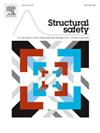基于可靠性的量化机器学习预测模型在地震结构设计和性能评估中的益处
IF 6.3
1区 工程技术
Q1 ENGINEERING, CIVIL
引用次数: 0
摘要
机器学习(ML)技术在预测不同结构元素的行为方面具有很高的准确性,因此在结构工程领域的研究中得到了广泛应用。事实上,相对于传统统计模型的卓越预测性能往往被认为是采用 ML 模型的主要动机。然而,这种预测精度的提高对结构系统设计和性能的影响尚未得到研究。本文以可靠性为基础,探讨了 ML 模型在结构设计和性能方面带来的切实好处。为了量化这些优势,预测精度的提高被解释为认识不确定性的降低。具体重点是一个预测模型,该模型利用特殊边界元素估算钢筋混凝土剪力墙(RCSW)的漂移能力。相对于基本的线性回归方程,极端梯度提升(XGBoost)模型的准确性被量化为认识不确定性的降低。然后,使用 36 个 RCSW 原型建筑,实施基于 Monte Carlo 的程序,评估提高的预测精度对抗震设计和性能的影响。这项研究深入探讨了需要提高多少精度(即相对于传统模型的 ML)才能对抗震设计和性能产生切实影响。本文章由计算机程序翻译,如有差异,请以英文原文为准。
Reliability-based quantification of the benefits of machine learning predictive models in seismic structural design and performance assessment
Machine Learning (ML) techniques have been used extensively in research within the field of structural engineering due to their high level of accuracy in predicting the behavior of different structural elements. In fact, the superior predictive performance relative to traditional statistical models is often suggested as the primary motivation for the adoption of ML models. However, the implications of such improvements in predictive accuracy in the design and performance of structural systems have not been studied. This paper presents a reliability-based investigation of the tangible benefits provided by ML models in terms of structural design and performance. To quantify these benefits, the increase in predictive accuracy is interpreted as a reduction in epistemic uncertainty. The specific focus is on a predictive model that estimates the drift capacity of reinforced concrete shear walls (RCSWs) with special boundary elements. The accuracy of an extreme gradient boosting (XGBoost) model relative to a basic linear regression equation is quantified in terms of reduced epistemic uncertainty. Then, using 36 RCSW archetype buildings, a Monte Carlo-based procedure is implemented to evaluate the implication of the improved predictive accuracy to seismic design and performance. The study provides insights into how much improvement in accuracy (i.e., ML relative to traditional model) is needed to have a tangible effect on the seismic design and performance.
求助全文
通过发布文献求助,成功后即可免费获取论文全文。
去求助
来源期刊

Structural Safety
工程技术-工程:土木
CiteScore
11.30
自引率
8.60%
发文量
67
审稿时长
53 days
期刊介绍:
Structural Safety is an international journal devoted to integrated risk assessment for a wide range of constructed facilities such as buildings, bridges, earth structures, offshore facilities, dams, lifelines and nuclear structural systems. Its purpose is to foster communication about risk and reliability among technical disciplines involved in design and construction, and to enhance the use of risk management in the constructed environment
 求助内容:
求助内容: 应助结果提醒方式:
应助结果提醒方式:


